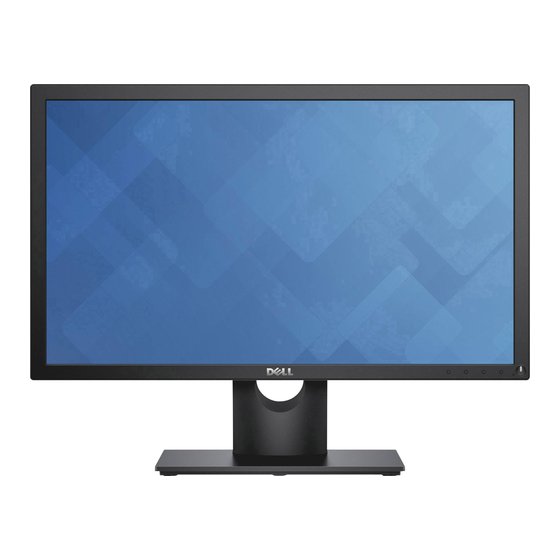Dell PowerConnect 2224 User Manual - Page 9
Browse online or download pdf User Manual for Switch Dell PowerConnect 2224. Dell PowerConnect 2224 24 pages. Technical specifications update for the dell powerconnect 2200/2300 series ethernet switches
Also for Dell PowerConnect 2224: User Manual (38 pages), Technical Specifications Update (2 pages)

Back to Contents Page
Troubleshooting
Dell™ PowerConnect™ 2216/2224/2324 Switches User's Guide
This section provides troubleshooting information for your switch.
solutions.
Table 2-1. Basic Troubleshooting
Problem
Probable Cause
Power LED is not lighted.
There is no power to the switch.
Link LED is not lighted.
The cable is not securely connected to the switch or the
attached device.
The attached device is not configured correctly, or it is not
powered on.
The cable is damaged or not properly terminated.
The cable's maximum distance has been exceeded.
Mismatched duplex mode.
Bad switch port.
Link speed LED indicates a
Incorrect cable grade.
lower speed than expected.
Damaged cable.
The cable's maximum distance has been exceeded.
Link LED is lighted, but the
There is no Ethernet traffic on the link. The LED blinks only
activity (ACT) LED does not
when traffic is being passed to or sent from a device that is
blink.
connected to the port.
The attached device is not configured correctly.
Link LED is lighted and the
This can be normal link activity. Some collisions take place
FDX/HDX LED blinks
during normal operation.
occasionally.
Link LED is lighted and the
Mismatched duplex mode.
FDX/HDX LED blinks
frequently.
The link is reaching its maximum capacity.
Back to Contents Page
Table 2-1
describes general problems you may encounter and the probable causes and
Corrective Action
Confirm that the switch is connected to a properly functioning
and active power source.
Ensure that the power cable is securely connected to the
switch and to a power source.
Ensure that the connectors are fully inserted into the ports of
the switch and the attached device.
Ensure that the attached device is powered on. Verify that the
NIC on the attached device is operating properly.
Test the cable.
Try a known working cable.
Ensure that the cables are terminated using TIA 568A or 568B
standards.
10Base-T, 100Base-T, and 1000Base-T cables have limitations
for link lengths. Move the connected device closer to the switch
and use a shorter cable.
Ensure that all devices connected to the switch are configured
to automatically detect and set port speed and duplex settings.
Reconnect the connector for the affected link to a different
switch port.
Ensure that you are using Category 5 cable or better for all
10Base-T and 100Base-T links, or Category 5e for 1000Base-T
links.
Test any cables that have kinks, sharp bends, or appear to be
damaged.
10Base-T, 100Base-T, and 1000Base-T cables have limitations
for link lengths. Move the connected device closer to the switch
and use a shorter cable.
No action required.
Verify that the port or NIC on the attached device is operating
properly.
No action required.
Ensure that any devices connected to the switch are set to
automatically detect and set port speed and duplex settings.
Resegment the network to decrease the number of users on
the link.
